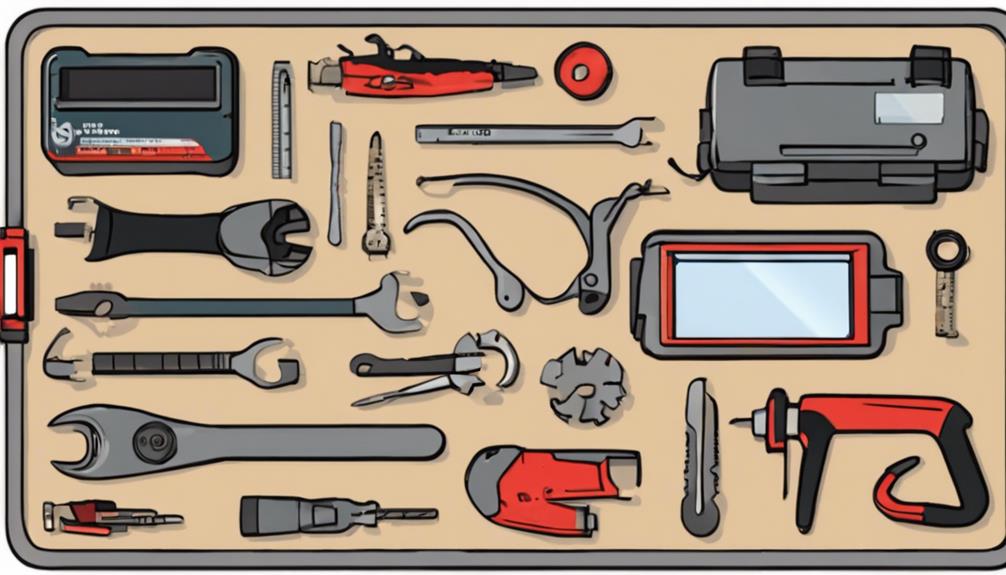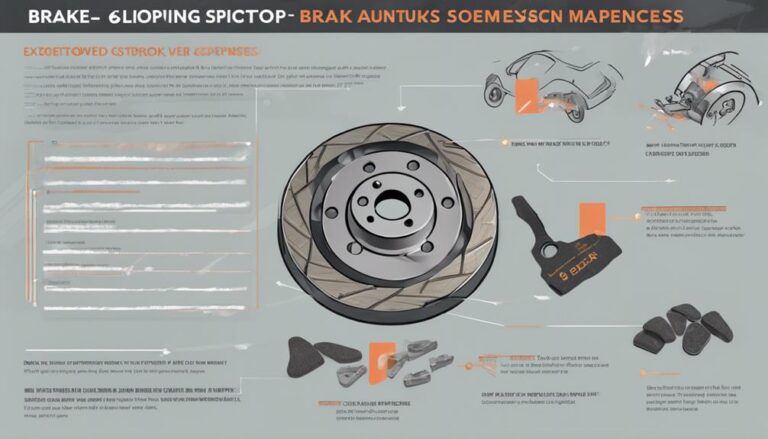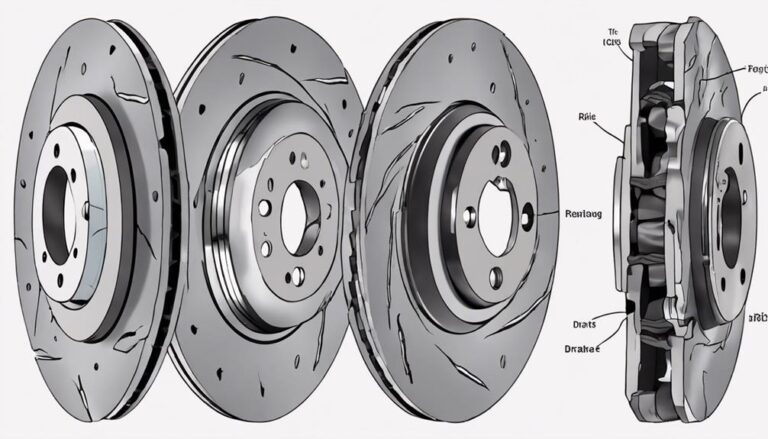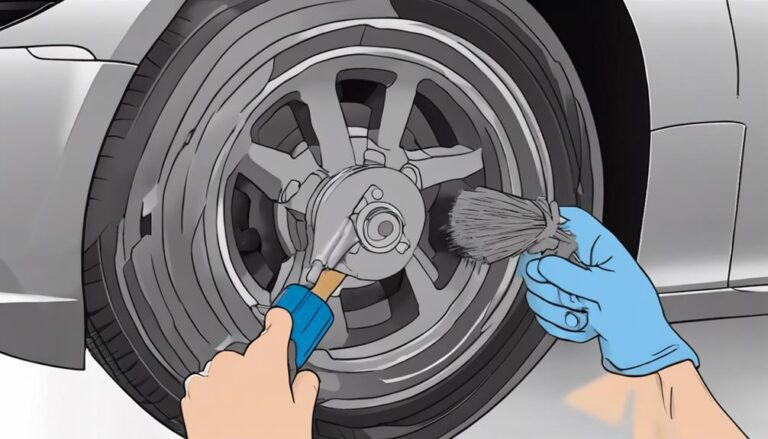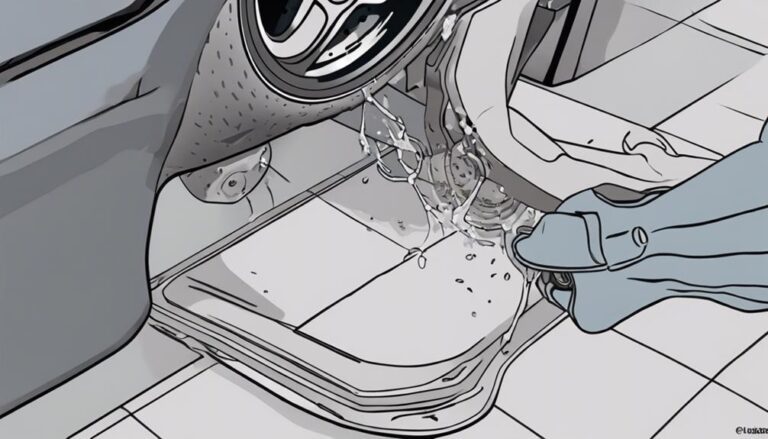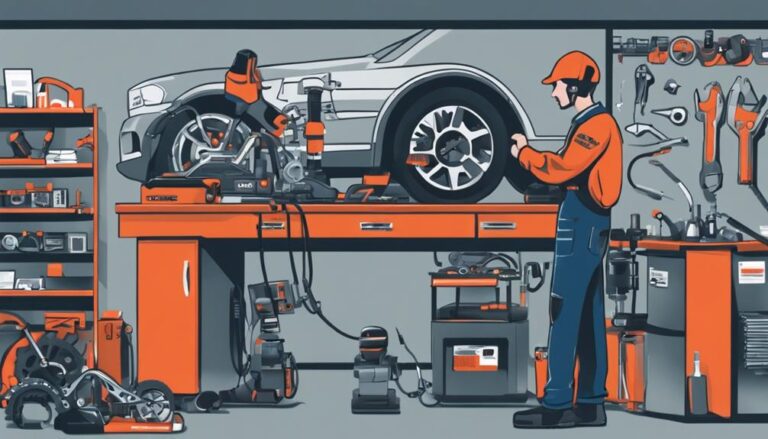What Tools Are Best for Brake System Inspection?
When it comes to assessing the health of your brake system, the right tools can make all the difference. Imagine having the ability to pinpoint potential issues swiftly and accurately, ensuring your safety on the road.
But which tools are truly the best for this critical task? Let's explore the arsenal of equipment designed to keep your brakes in top-notch condition and your mind at ease.
Key Takeaways
- Brake caliper piston tool ensures safe piston retraction and uniform compression.
- Brake fluid tester evaluates contamination and boiling point for consistent performance.
- Brake pad thickness gauge monitors wear, prevents damage, and saves money.
- Brake bleeder kit maintains clean fluid, firm pedal feel, and overall braking efficiency.
Brake Caliper Piston Tool
When inspecting brake systems, utilizing a brake caliper piston tool is crucial for safely and efficiently retracting the caliper piston during brake pad replacement. Proper piston retraction techniques are vital to ensure uniform compression, preventing damage and uneven wear on brake components.
The caliper piston tool facilitates the process by providing a means to compress the piston uniformly, creating the necessary clearance for inserting new brake pads. This tool also aids in the smooth reinstallation of the caliper, enhancing the overall efficiency of the brake maintenance process.
Additionally, incorporating caliper maintenance tips while using the tool can further optimize brake system performance. By reducing the risk of caliper piston binding or sticking, this tool promotes safe and precise caliper operation.
Cost-effective and easy to use, the brake caliper piston tool is an essential component for those seeking liberation through effective brake system maintenance.
Brake Fluid Tester
To effectively assess the condition of your brake fluid and ensure optimal performance, utilizing a brake fluid tester, such as a refractometer, is essential for accurate measurements of moisture content and boiling point. Here's why a brake fluid tester is crucial for maintaining your brake system:
- Fluid contamination assessment: A brake fluid tester helps in evaluating the level of water contamination in the fluid, which can affect the braking system's efficiency and longevity.
- Temperature tolerance evaluation: By measuring the boiling point of the brake fluid, the tester aids in determining the fluid's ability to withstand high temperatures, crucial for preventing brake fade and ensuring consistent performance under diverse driving conditions.
- Performance optimization: Regular testing with a brake fluid tester not only ensures the safety of your vehicle but also enhances the effectiveness of the brake system, providing you with peace of mind while on the road.
Incorporating a brake fluid tester into your maintenance routine offers valuable insights and reminders for keeping your brake fluid in top condition.
Brake Pad Thickness Gauge
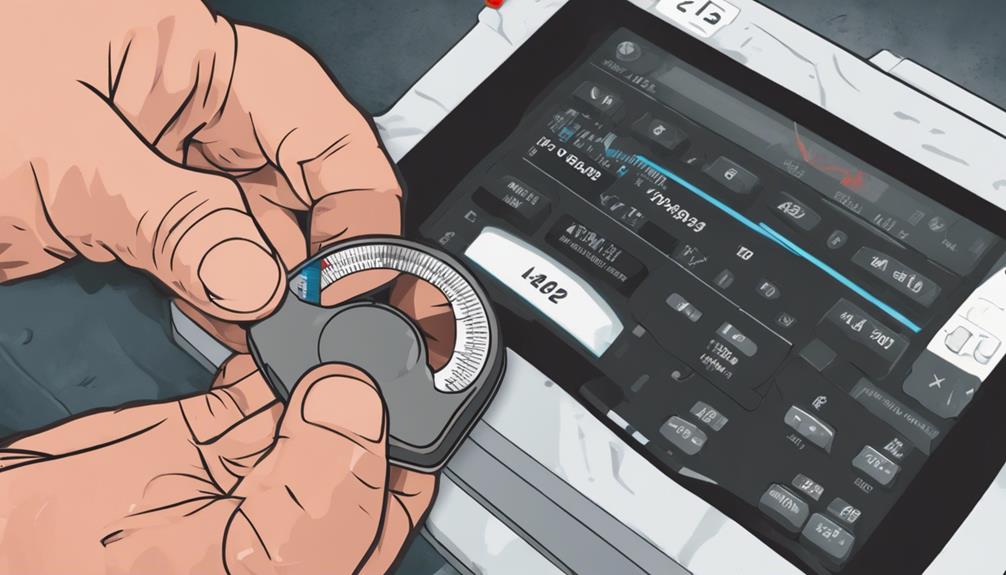
Utilize a brake pad thickness gauge as a precise tool for accurately measuring the thickness of your brake pads. This device is essential for monitoring brake pad wear and determining when replacement is necessary.
By regularly checking the thickness of your brake pads with this gauge, you can proactively address any issues before they lead to brake failure. This tool not only ensures your safety but also helps in maintaining optimal braking performance on the road.
Brake pad wear is a critical aspect of vehicle maintenance, and a thickness gauge provides a straightforward method to assess this wear accurately. Knowing when to replace brake pads based on precise measurements can prevent damage to other brake components and save you money in the long run.
Brake Bleeder Kit
Transitioning from monitoring brake pad wear to ensuring optimal brake system performance, the next crucial tool to discuss is the brake bleeder kit. This tool is essential for maintaining the health of your brake system by removing old brake fluid and air bubbles that can compromise braking efficiency. Here are three key points to consider when using a brake bleeder kit:
- Brake Bleeding Techniques: The brake bleeder kit allows you to perform proper brake bleeding techniques, ensuring that all air bubbles are removed from the brake lines. This process helps maintain a firm brake pedal feel and prevents spongy brakes.
- Troubleshooting Brake Fluid Contamination: With the right tools included in the kit, you can troubleshoot brake fluid contamination issues. Contaminated brake fluid can lead to corrosion and reduced brake performance, making regular maintenance crucial.
- Enhancing Brake System Maintenance: Regularly using a brake bleeder kit as part of your maintenance routine can help extend the life of your brake components. By keeping your brake fluid clean and ensuring proper bleeding, you improve overall braking efficiency and safety.
Brake Rotor Micrometer

A brake rotor micrometer is an essential precision tool for accurately measuring the thickness of brake rotors, ensuring they're within the manufacturer's specified limits for safe operation.
This tool is crucial for maintaining optimal braking performance by preventing rotor wear beyond acceptable levels.
In addition to measuring rotor thickness, a micrometer can also assess rotor runout, which is crucial for ensuring smooth and vibration-free braking.
Rotor material composition can impact the rotor's durability and heat dissipation capabilities, making precise measurements vital for choosing the right replacement rotors.
Furthermore, a brake rotor micrometer aids in evaluating rotor surface finish, which can affect brake pad wear and overall braking efficiency.
Frequently Asked Questions
How Do You Inspect a Brake System?
To inspect a brake system, visually check brake pads, rotors, calipers, and lines for wear, damage, and leaks. Analyze brake fluid level and quality in the master cylinder. Ensure safety and optimal brake performance.
What Measuring Tools and Procedures Should You Use to Inspect Disc Brakes?
You need to ensure precise measurements with a digital caliper for accurate caliper measurements. Conduct a thorough visual inspection to check for wear. Following these steps diligently will help maintain your brake system's optimal performance.
What Should You Inspect When Checking the Brakes and What Tool Is Being Used?
Inspecting brake pad wear is crucial. Evaluate caliper piston movement for smooth operation. Check rotor thickness, runout, and flatness. Examine brake lines for leaks. Assess brake fluid condition. Use micrometer, calipers, gauges, and refractometer for precise measurements.
How Do You Test a Braking System?
To test a braking system, first, you'd assess the brake fluid through a moisture and boiling point check. Then, perform a pressure test and responsiveness test on the brake pedal. These steps ensure a thorough examination for safety.
Conclusion
In conclusion, when it comes to inspecting a brake system, having the right tools is essential. From the precise measurements provided by a micrometer or calipers to the accurate testing of brake fluid with a refractometer, each tool plays a crucial role in ensuring the safety and efficiency of the braking system.
So, equip yourself with these tools, and you'll be ready to tackle any brake inspection task with ease and precision. Remember, having the right tools is like having a superpower in the world of brake maintenance!

